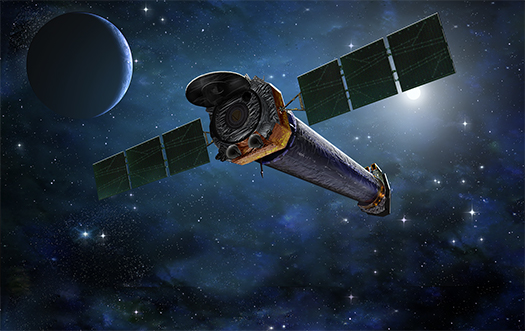For Release: September 7, 2021
NASA/CXC

NASA's Chandra X-ray Observatory has successfully resumed observations after recovery from a problem involving one of its science instruments, the Low Energy Transmission Grating (LETG). The LETG is used to measure the intensity of X-rays at different energies.
In preparation for an observing run Aug. 31 using the LETG, the movement of this instrument into its operating position — where it intercepts the path of X-rays — occurred faster than normal, by a fraction of a second. This unexpected timing change caused Chandra's flight software to report that the instrument's movement into operating position had failed. Further motion of the gratings was automatically prevented, resulting in several observations being carried out with the LETG in position, despite not requiring this instrument.
When the next regularly scheduled communication of Chandra with the Deep Space Network on Earth occurred several hours later, staff at the Operations Control Center at the Chandra X-ray Center in Massachusetts were alerted to the problem and stopped observations. Following analysis of the problem, the LETG was successfully moved back out of its operating position. Observations without the LETG resumed Sept. 2. The timing problem with the grating's motion is being investigated before further observations with the LETG or its companion instrument, the High Energy Transmission Grating, will be conducted.
Chandra has been in operation for 22 years, now well into its extended mission. NASA's Marshall Space Flight Center manages the Chandra program. The Smithsonian Astrophysical Observatory's Chandra X-ray Center controls science and flight operations from Cambridge and Burlington, Massachusetts.
Media Contacts:
Megan Watzke
Chandra X-ray Center, Cambridge, Massachusetts
617-496-7998
mwatzke@cfa.harvard.edu
Molly Porter
Marshall Space Flight Center, Huntsville, Alabama
256-544-0034
molly.a.porter@nasa.gov


